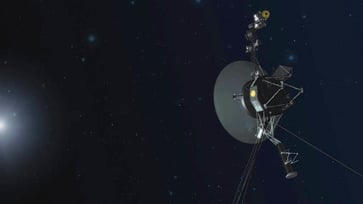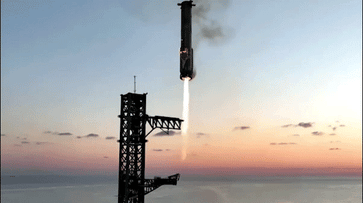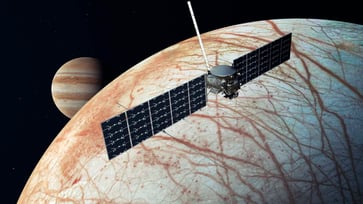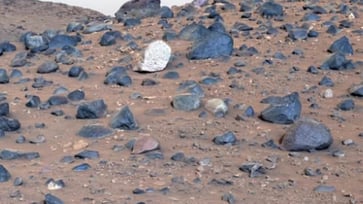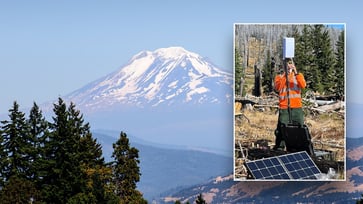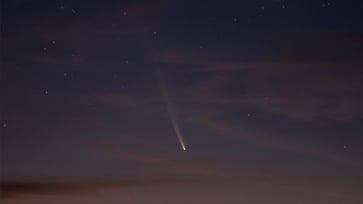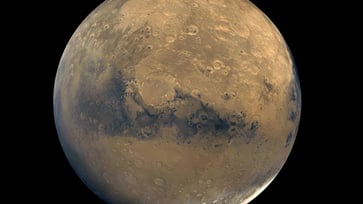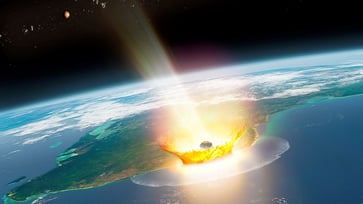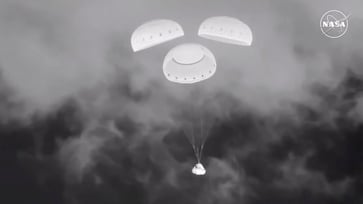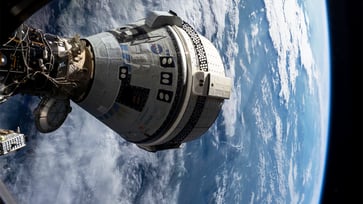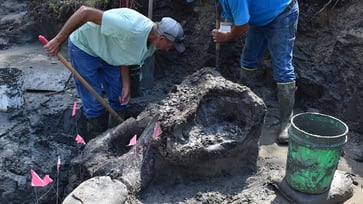The Chinese space probe is visible in photos taken by NASA's lunar orbiter on the far side of the moon.
China is intensifying its space program with the goal of landing a man on the moon by 2030.
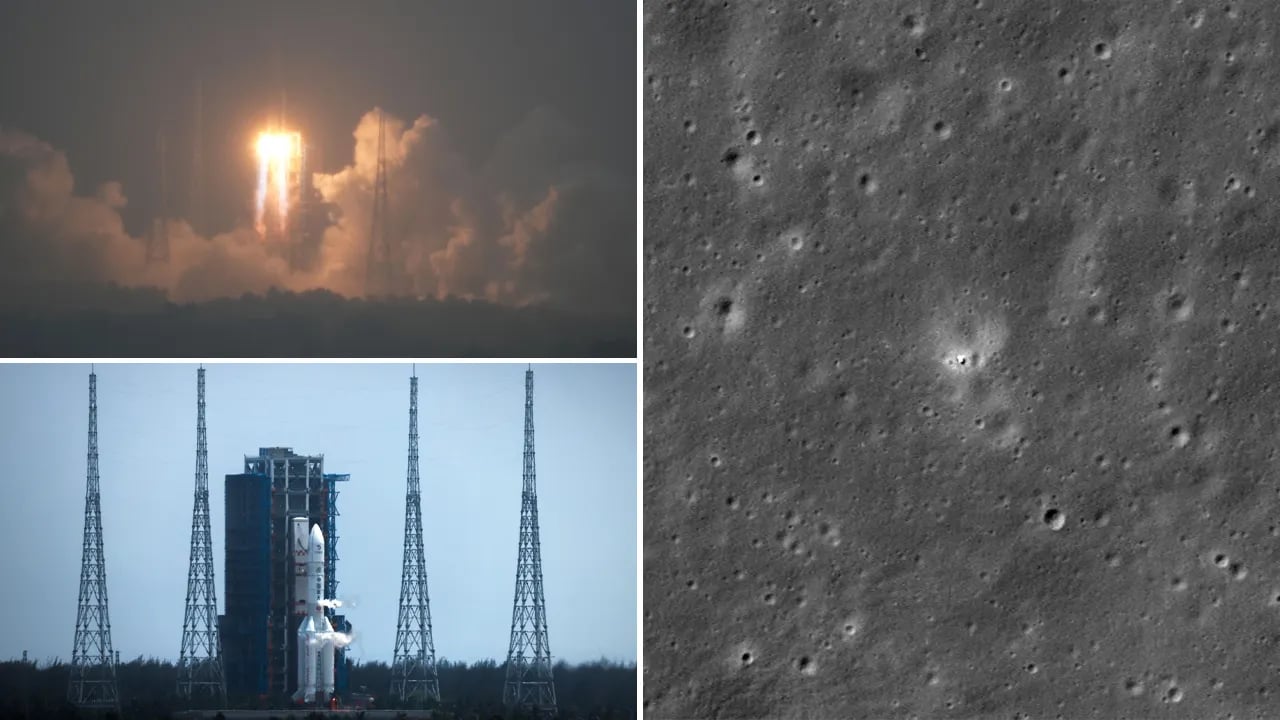
The first photos of China's Chang'e-6 space probe on the far side of the moon have been released by NASA.
NASA's Lunar Reconnaissance Orbiter Camera (LROC) captured images of China's sample return spacecraft on June 7, which landed on the moon on June 1. The LROC passed over the site a week later and acquired an image showing the lander on the rim of a 55-yard crater on the moon's surface, the agency said.
The LROC team estimated the landing site coordinates to be approximately 42 degrees south latitude, 206 degrees east longitude, and at an elevation of about minus 3.27 miles.
NASA and Arizona State University released images of the Apollo landing site, located near the southern edge of the Apollo basin on the lunar far side.

NASA stated that 3.1 billion years ago, basaltic lava erupted south of Chaffee S crater and flowed westward until it met a local topographic high, possibly linked to a fault. As a result, several wrinkle ridges in this area have been deformed and raised the mare surface.
"The landing site is situated between two prominent ridges and is partially covered by a slightly older basaltic flow, which is approximately 3.3 billion years old, visible further west. However, the younger flow is distinguishable due to its higher iron oxide and titanium dioxide concentrations."

This month, China's Chang'e-6 probe displayed its red and gold flag on the moon for the first time, followed by the release of a space instrument to return to Earth with rock and soil samples.
The mission was successful, and China aims to land a man on the moon by the end of the decade, as stated by Chinese officials.

The spacecraft withstood a high temperature test on the lunar surface and acquired the samples using both drilling and surface collection before storing them in a container inside the ascender of the probe as planned, according to the China National Space Administration.
The reentry capsule, due to return to Earth, will receive the container in the deserts of China's Inner Mongolia region around June 25.

"An unprecedented achievement in human lunar exploration history!" Foreign Ministry spokesperson Hua Chunying wrote on X. "Mission accomplished!"
Remote spacecraft on the moon's far side are challenging to maintain contact with due to the lack of direct sunlight, necessitating the use of satellites. Additionally, the rugged terrain makes landing on the moon's far side a difficult task.

The Chang'e-6 mission, named after the Chinese goddess of the moon, is China's sixth lunar exploration program and the second probe to retrieve soil samples, following the Chang'e-5 mission launched in 2020.
In an attempt to surpass the U.S. as the first country to put a man on the moon, China has intensified its space program. By 2030, China aims to achieve this historic feat, making it the second nation to do so. Meanwhile, NASA is planning a second lunar mission with a revised target date of 2026.
The Associated Press contributed to this report.
science
You might also like
- Lunar modules from the first two moon landings have been captured in stunning detail by Orbiter photos, more than 50 years after the historic missions.
- Discovery of a remarkable mastodon jaw in a New York homeowner's backyard
- NASA resumes communication with Interstellar Voyager 1 after pause.
- In 2055, the asteroid that was once referred to as Earth's "mini moon" will make a return visit.
- A new species of sea slug that resides in the ocean's 'midnight zone' has been discovered with a glowing appearance.
